Developers never cease to amaze me, especially about email creation. They’re solvers, fixers, work-arounders. When it comes to one of the most popular ways to create emails, design to code, they are crucial—mainly because that workflow calls for each email to be hand-coded by, you guessed it, developers.
Although developers’ skills are admirable, your email creation workflow’s efficiency depends on their speed and, most important, availability. For example, during the approvals process, a reviewer sees a period where a comma should be. The email-in-the-making needs to go back to the developer to be corrected, assuming they can address the issue immediately, which is often not the case. Once revised, it returns to the approvals routine. If another correction is required, you need to repeat the previous steps, hopefully before the email is deployed. All that back-and-forth consumes lots of time. Interestingly, 80% of companies using this approach need one week to produce one email. It’s not uncommon to see it take multiple weeks to create an email using this method.
That and other scenarios are not the fault of developers—it’s the fault of the design-to-code workflow. Stensul identified eight aspects of that workflow that make email creation more complicated, more time-consuming, and more costly than it needs to be. This post lists each and explains how to deal with them to make your email creation process simpler and speedier.
1. Unexpected broken code
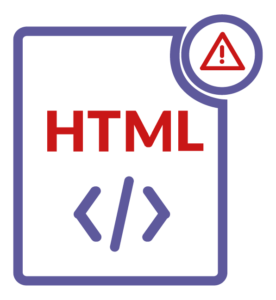 When content looks normal but isn’t, that’s a sign of broken code. Italicized or boldfaced text doesn’t appear, but extra spaces do. And there are problems with paragraphs and paragraph spacing. Although QA usually catches such issues, the email has to go back to the developer to be fixed in a design-to-code workflow, and that takes time.
When content looks normal but isn’t, that’s a sign of broken code. Italicized or boldfaced text doesn’t appear, but extra spaces do. And there are problems with paragraphs and paragraph spacing. Although QA usually catches such issues, the email has to go back to the developer to be fixed in a design-to-code workflow, and that takes time.
How to overcome it:
An email creation platform lets people without coding knowledge create emails that go through an automated QA process—up front—to ensure their emails will get sent and display without broken code issues.
2. Long load times overall
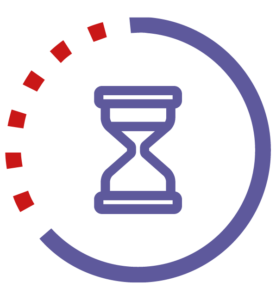 If it takes too long for all elements of an email—all the HTML, images, and other digital assets—to come into view for the recipient, that’s not a positive experience. It happens because some part of the email is too heavy or too large. As a result, there’s a good chance they won’t read the email.
If it takes too long for all elements of an email—all the HTML, images, and other digital assets—to come into view for the recipient, that’s not a positive experience. It happens because some part of the email is too heavy or too large. As a result, there’s a good chance they won’t read the email.
How to overcome it:
Slimmer, better-designed emails can better deal with the variations of email clients, devices, and viewing circumstances.
A great way to avoid guessing whether the HTML is the right “weight” or if digital images will load quickly and display correctly is to use an email creation platform to create emails. It takes the assorted variations into account. That’s not the case with a design-to-code workflow.
3. Images not loading
 It’s about file size. Some email clients will not allow images above a specific size to be downloaded, including some of the most popular, like Apple Mail, which has a 20 MB file size limitation.
It’s about file size. Some email clients will not allow images above a specific size to be downloaded, including some of the most popular, like Apple Mail, which has a 20 MB file size limitation.
How to overcome it:
Being able to anticipate the numerous variables to ensure images in an email are loaded is not easy. An email creation platform factors in all the variables, so you don’t have to.
4. No live text impacts deliverability
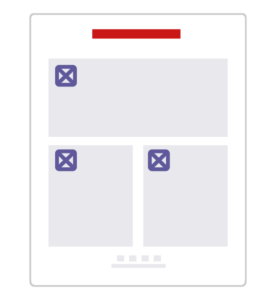 Imagine an email created with only images. Now imagine someone trying to comprehend what the email is about, but the images don’t load. All the effort to create that email goes for naught, mainly because there was no live text in it.
Imagine an email created with only images. Now imagine someone trying to comprehend what the email is about, but the images don’t load. All the effort to create that email goes for naught, mainly because there was no live text in it.
How to overcome it:
When designing an email, don’t focus only on the creative aspects. Instead, think about the email’s purpose—to have it read and prompt action. By including HTML text, which is what live text is, you’re able to create a message that is seen and understood because it will display even when images don’t. Using an email creation platform ensures all that happens appropriately. That’s not the case with a design-to-code workflow.
5. Images not retina quality
 Retina displays, called high-DPIs, or high dots per inch displays, arrived with the iPhone 4 in 2010. They yield more detailed, clearer images and text on the screens of devices that have them.
Retina displays, called high-DPIs, or high dots per inch displays, arrived with the iPhone 4 in 2010. They yield more detailed, clearer images and text on the screens of devices that have them.
Retina-quality images have twice as many pixels per inch as traditional digital images. They need to be twice as large to look as good. And when scaling down to accommodate the compact screens of mobile phones, bad things happen to good images.
How to overcome it:
It’s about file size management. An email creation platform makes that process automatic because it allows you to use retina-quality images for virtually any email client used on any device.
6. Not mobile-optimized
 Creating an email today means more than developing it with an eye toward it being read on a mobile device. Although that dictates how elements are laid out, it goes beyond the landscape scheme of mobile vs. desktop’s portrait arrangement. It’s also about having emails created that work well with many mobile email clients, among other things.
Creating an email today means more than developing it with an eye toward it being read on a mobile device. Although that dictates how elements are laid out, it goes beyond the landscape scheme of mobile vs. desktop’s portrait arrangement. It’s also about having emails created that work well with many mobile email clients, among other things.
How to overcome it:
You need a blend of enough content so your message is understood, with enough visual acuity to be read. All that can be handled easily and quickly when using an email creation platform. It lets you preconfigure emails, taking into account the assorted variables and non-technical-type users, to efficiently create an effective email.
7. Text not ADA compliant
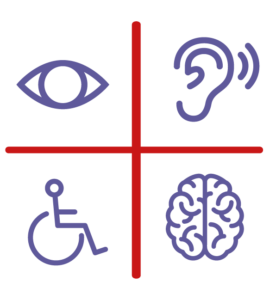 The Americans with Disabilities Act (ADA) and the Accessible Canada Act call for emails to meet specific accessibility requirements. They’re clarified in the Web Content Accessibility Guidelines (WCAG). If your company creates emails that people with disabilities can’t read, you face a $75,000 fine for the first compliance failure. Beyond the fine and hit on your brand’s reputation, you’re missing a sizable portion of the market. It’s estimated there are 4.2 million Americans 40 years and older who are visually impaired. That number is expected to rise to 7.2 million by the end of this decade.
The Americans with Disabilities Act (ADA) and the Accessible Canada Act call for emails to meet specific accessibility requirements. They’re clarified in the Web Content Accessibility Guidelines (WCAG). If your company creates emails that people with disabilities can’t read, you face a $75,000 fine for the first compliance failure. Beyond the fine and hit on your brand’s reputation, you’re missing a sizable portion of the market. It’s estimated there are 4.2 million Americans 40 years and older who are visually impaired. That number is expected to rise to 7.2 million by the end of this decade.
How to overcome it:
It’s straightforward—create emails that conform with what’s spelled out in the ADA/ACA/WCAG:
- Maintain a logical reading order
- Use heading elements in code
- Include sufficient contrast between text and background colors
- Provide text alternatives for images
- Feature meaningful link text
- Keep code concise
- Use a descriptive subject line
Make it even simpler for yourself by using an email creation platform that has these requirements, and more, preconfigured.
8. Tracking and testing limitations
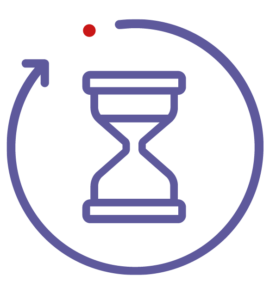 This challenge is all about time—or the lack of it. Creating emails in a design-to-code workflow results in a 90% creation/10% strategy time allocation. That means you have very little time to analyze prior email efforts to sharpen the strategy for the one you’re developing. You also have less time to conduct A/B testing or track to see any number of areas that can help you gain insight to make the email more effective.
This challenge is all about time—or the lack of it. Creating emails in a design-to-code workflow results in a 90% creation/10% strategy time allocation. That means you have very little time to analyze prior email efforts to sharpen the strategy for the one you’re developing. You also have less time to conduct A/B testing or track to see any number of areas that can help you gain insight to make the email more effective.
How to overcome it:
Create emails on an email creation platform, and turn what takes days when using a design-to-code workflow into hours. That approach frees up time for analysis, strategy development, testing, and refinement. Using an email creation platform also lets you track differently and more deeply via Google Analytics and apply different tags to CTAs.
To learn more about how an email creation platform can help you create emails in less time that perform better, download the Stensul eBook, How to overcome 8 challenges in Design to Code email creation.
If you’d like to see how the Stensul Email Creation Platform™ can elevate your email marketing programs, please request a demo.




